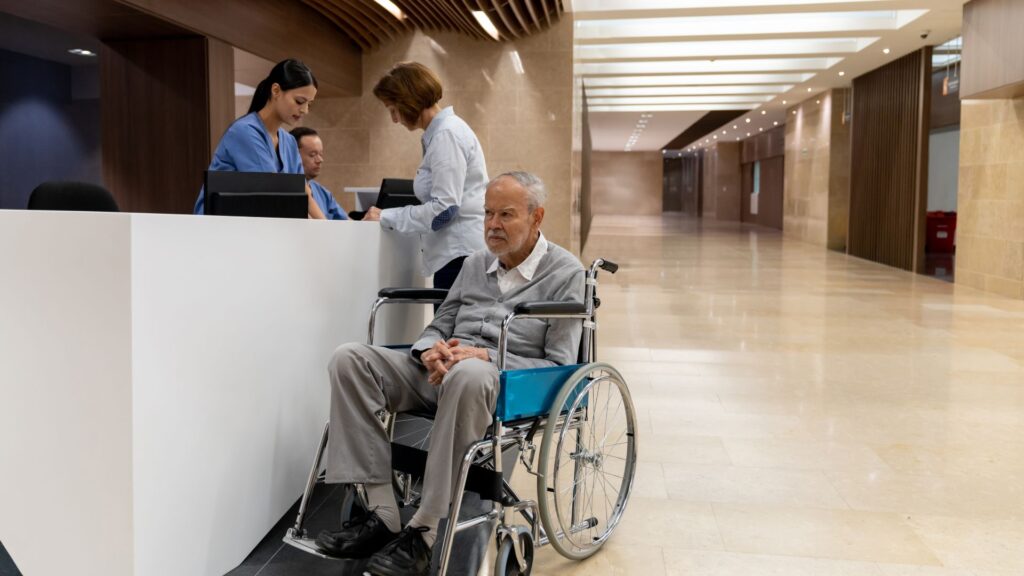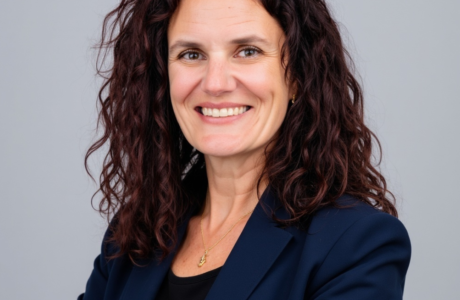
How to Read a Hospital Discharge Summary and Prevent a Return to the ER
What Is the Hospital Discharge Summary?
Few documents matter more than the hospital discharge summary—the packet families receive when a loved one leaves the hospital. At first glance, it can look like routine paperwork. But in reality, it is one of the most important tools families have to ensure a safe recovery at home.
A discharge summary is essentially a translation of the hospital stay into a roadmap for what comes next. It explains the diagnosis, what treatments were provided, and—most critically—what the patient and family must do in the days and weeks after leaving. This includes medications, follow-up appointments, diet and activity guidelines, and instructions on what symptoms should prompt a call to the doctor or a return to the hospital.
Unfortunately, research shows that up to 40% of patients misunderstand or forget key information from their discharge instructions. When details are missed, the consequences can be serious: medication errors, missed follow-up visits, or complications that could have been prevented.
Think of the discharge summary as the bridge between the hospital and home. Without it, families are left to guess at the next steps. With it—when read carefully and clarified if needed—families gain a clear plan, a checklist, and the confidence that they can handle recovery without unnecessary setbacks.
Discharge Summary 101: What Families Often Miss
To get the most from this document, it helps to know what it is—and what can go wrong.
The discharge summary is meant to:
- Provide a written record of what happened in the hospital.
- Give patients and families clear next steps for recovery.
- Act as a communication tool between hospital staff and outside providers.
Common mistakes families make include:
- Leaving without a copy of the discharge summary.
- Assuming the medication list is complete and accurate.
- Missing or misunderstanding follow-up appointment instructions.
- Ignoring diet or activity restrictions because they seem “minor.”
- Not asking questions when something is unclear.
The bottom line? This document is only useful if you understand it, keep it handy, and use it as a reference throughout the recovery period.

Why the Discharge Summary Matters
A discharge summary is not just paperwork—it’s the roadmap for what happens next. Yet research shows up to 40% of patients leave the hospital with gaps in understanding their instructions.
Without clarity on medications, follow-up appointments, or red-flag symptoms, families risk:
- Medication errors or duplicate prescriptions.
- Missed follow-up visits.
- Preventable complications leading to readmission.
Mastering this document is one of the simplest ways to protect your loved one during the fragile recovery window.
What’s Inside a Discharge Summary
Every hospital’s format looks different, but the essentials are usually the same:
- Diagnosis & Hospital Course — why the patient was admitted and what happened during the stay.
- Families should confirm this is accurate. Mistakes do occur, and an inaccurate record can create confusion for future providers.
- Families should confirm this is accurate. Mistakes do occur, and an inaccurate record can create confusion for future providers.
- Medication Reconciliation — a complete list of medications, including changes, new prescriptions, and discontinued drugs.
- Example: a patient may be discharged with both a brand-name drug and its generic equivalent listed. Without clarification, they could take both by mistake.
- Example: a patient may be discharged with both a brand-name drug and its generic equivalent listed. Without clarification, they could take both by mistake.
- Follow-Up Appointments — who to see next, and when.
- Missing even one appointment—especially with a primary care provider in the first 7 days—can double the risk of readmission.
- Missing even one appointment—especially with a primary care provider in the first 7 days—can double the risk of readmission.
- Activity & Diet Instructions — what’s safe to eat, drink, or do physically.
- For example, a patient recovering from surgery may be told not to lift more than 10 pounds or to avoid stairs until cleared.
- For example, a patient recovering from surgery may be told not to lift more than 10 pounds or to avoid stairs until cleared.
- Red Flag Symptoms — warning signs that require urgent attention.
- For pneumonia, that might mean worsening shortness of breath. For surgery, it might mean fever or wound drainage.
- For pneumonia, that might mean worsening shortness of breath. For surgery, it might mean fever or wound drainage.
- Home Services Ordered — referrals for home health, physical therapy, or palliative care.
- Families should confirm which service has been ordered. Home health and palliative care are not the same, and confusion here can leave gaps in support.
Preparing Before Discharge Day
The discharge summary isn’t something you should only glance at once you’re already on the way out the door. Families can save themselves stress by preparing questions in advance.
Before discharge day, ask: Who will explain the summary to us? What medications will change? How soon do follow-up visits need to be scheduled? What services will be set up at home?
Having these questions ready ensures the summary becomes a collaborative tool, not a rushed formality. When patients and caregivers treat discharge planning as a conversation—not just a document—they walk away with more confidence and fewer avoidable risks.

The Discharge Summary Checklist
When reviewing the document, use this checklist:
- Do I understand the reason for hospitalization and what was done?
- Has the medication list been reconciled with what my loved one was taking before?
- Do I know the timing and purpose of each follow-up appointment?
- Are activity and diet restrictions clear and doable?
- Have red-flag symptoms been explained (and what to do if they happen)?
- Do I know whether we’re set up with home health, outpatient rehab, or palliative care?
If you can’t check all the boxes, don’t leave without asking.
Medication Reconciliation: Why It’s Crucial
One of the most common—and dangerous—points of confusion after hospitalization is medication changes. It’s not unusual for a patient to return home with duplicates or conflicting prescriptions.
Best practices:
- Compare the hospital list with pre-hospital meds.
- Ask if any old prescriptions should be stopped.
- Bring the updated list to every follow-up appointment.
Medication errors are a leading cause of preventable readmissions. Reconciliation is your first line of defense.
Follow-Up Appointments: The Timeline That Matters
The discharge packet usually lists multiple follow-ups: primary care, specialists, and therapy. Skipping even one can derail recovery.
Typical timeline after hospitalization:
- Within 7 days: Primary care visit to review discharge.
- Within 14–21 days: Specialist visits (e.g., cardiology, orthopedics).
- Ongoing: Therapy (in-home or outpatient) as recommended.
Create a calendar right away so nothing gets lost.
Home Health vs. Palliative Care: Knowing the Difference
Many families see “home services ordered” and assume all support is the same. But there are important distinctions:
- Home health focuses on short-term, skill-based recovery: wound care, PT, and nursing check-ins.
- Palliative care supports both patient and family, managing symptoms, providing counseling, and preventing crises that send families back to the hospital.
Knowing which has been ordered—and whether more support is needed—prevents confusion later.

FAQ: Families’ Real Questions
Who explains the discharge summary?
Usually a nurse or physician at the hospital. But if the instructions feel rushed or confusing, you have the right to slow down and ask.
What if I don’t understand the instructions?
Ask for plain language explanations or written clarification. Hospitals are required to provide information in a way you can understand.
Can I ask for changes if something looks wrong?
Yes. If the diagnosis, medication list, or instructions don’t match what you know, request a correction before leaving.
How do I know if my loved one needs home health vs. palliative care?
Home health is typically for recovery from surgery or acute illness. Palliative care is for ongoing support with serious illness, symptoms, or complex decision-making.
What should I bring to the first follow-up appointment?
Always bring the discharge summary, updated medication list, and any questions that came up at home.
Family Story: When the Summary Made the Difference
One family left the hospital with instructions that didn’t clearly state a medication had been discontinued. Within a week, the patient was taking two versions of the same drug—and was back in the ER with complications.
Another family worked with Empowered Endings to review the discharge paperwork. Together, we caught a missed medication change, clarified the follow-up schedule, and provided in-home nursing support. That patient recovered at home without a single hospital readmission.
The difference wasn’t luck; it was literacy.
How Empowered Endings Supports Families After Discharge
At Empowered Endings, we know the discharge summary can feel overwhelming. That’s why our team reviews it line by line with families, ensuring no detail is missed. We:
- Double-check medication reconciliation.
- Confirm follow-up appointments and help coordinate scheduling.
- Provide in-home palliative and therapy services that bridge hospital and home.
- Train caregivers so they feel confident, not lost, in the days after discharge.
It’s the kind of guidance that makes recovery smoother and safer.
Why Families Trust Empowered Endings
Families consistently tell us the difference is peace of mind. By filling the gaps left by the hospital system, we transform a confusing stack of papers into a clear plan for recovery. That means fewer late-night ER runs, fewer missed steps, and more time focusing on what matters most: healing.
The Future of Health Literacy & Discharge Planning
Discharge instructions are evolving. More hospitals now provide electronic summaries through patient portals, and some are experimenting with video explanations or AI-driven medication reconciliation. But technology is only part of the answer. Families still need human support to interpret, apply, and act on the information.
Empowered Endings is committed to bridging that gap, combining modern tools with compassionate, clear guidance.
Conclusion: Make the Discharge Summary Work for You
Medical information is most helpful when families can understand and use it. A discharge summary is one of the most important documents in healthcare, but only if you know how to read it.
By mastering its contents, asking questions, and securing the right support, families can prevent unnecessary ER visits and ensure a smoother transition home.
One Next Step (CTA)
👉 Families: Book a complimentary Connection & Clarity Call—a 30–45 minute, no-pressure conversation with our expert team. We’ll review your discharge summary together, clarify next steps, and help create a safe, confident recovery plan.





